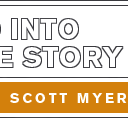Bruno, that was much the same vibe which occurred in the late 80s when scripts inundated with beats. People got sick of them. I understand the point about how they can be helpful for actors and directors, but that benefit is once the script has been set up and into the production draft stage. For a spec script, I’ve always had the opinion that one of our goals is to draw the reader into the reading experience, so they lose track of the fact they’re reading a script, and that they are swept up into the story. This is, I believe, one of the reasons why screenwriters moved away from including camera shots, directing jargon, even transitions (e.g., CUT TO). Those all feel “scripty.” While beat may be helpful working with actors, directors, and producers, at the selling stage, it may be less of a benefit — the term itself feeling very “scripty” — and, as in your case, leave a reader confused: What does it mean?
The funny thing about the level of emotion around this subject is it’s such a minor detail. I mean picayune. Whether a writer chooses to use beat or not, its importance is utterly minimal in comparison to characters, plot, dialogue, themes, pace, narrative voice, and all the rest which are the real drivers of great storytelling.
And yeah, I’ve never gotten a note to add a “beat” either.
